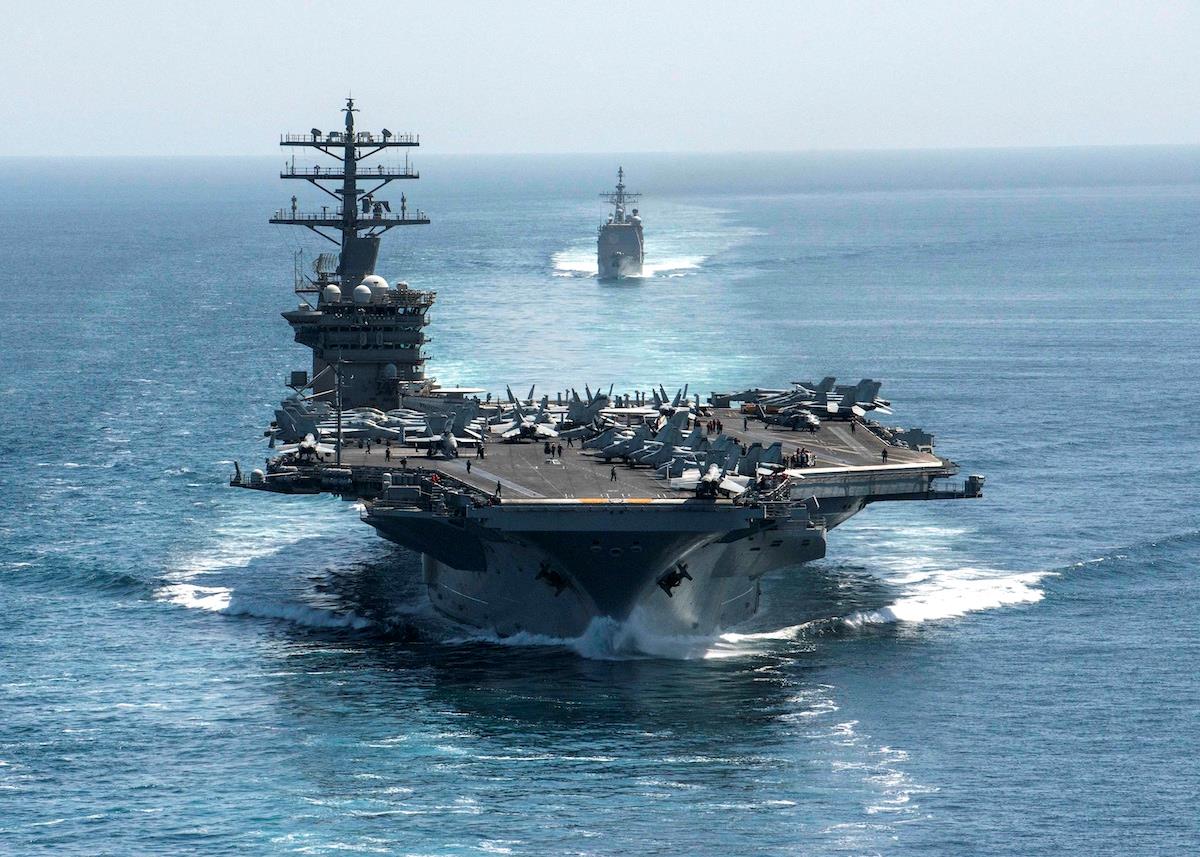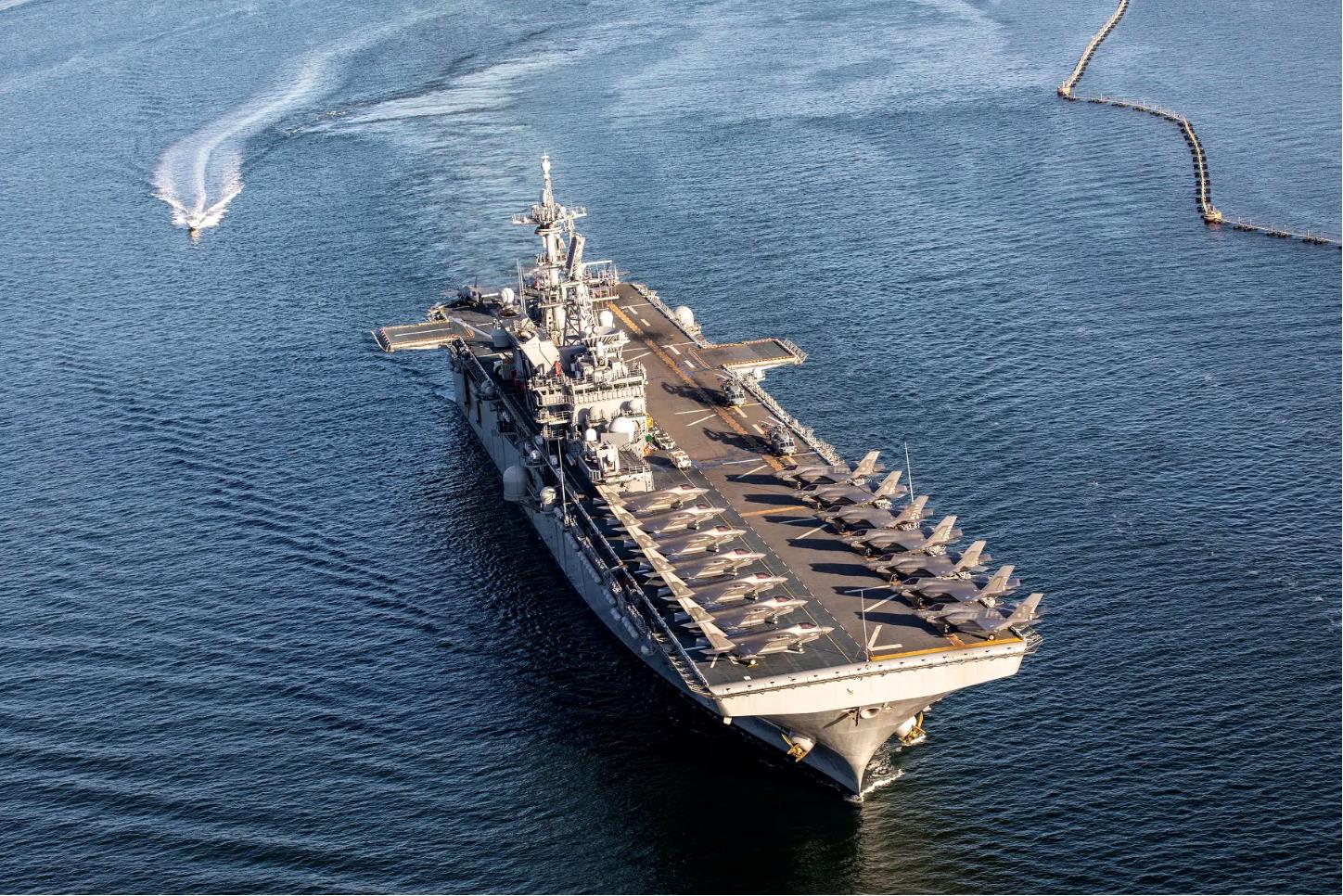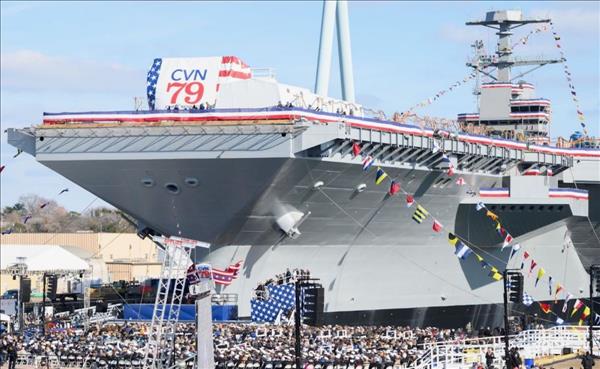(MENAFN- Asia Times) The US continues to build supercarriers at a time when their strategic and deterrent value is in serious doubt with the advent of hypersonic weapons.
this month, defense publication janes reported that the Gerald Ford-class supercarrier John F Kennedy (CVN 79) is scheduled to enter combat system testing this quarter, with delivery expected in 2024.
According to Christopher Kastner, President, CEO and director of Huntington Ingalls Industries (HII), which is in charge of building the ship, the“CVN 79 Kennedy is well into the test program.”
Kastner also said that the ship's“distributed systems such as fire main, potable water, air conditioning, and ventilation are coming to life.”
“The EMALS (Electromagnetic Aircraft Launch System) catapult system, which we began testing in 2022, remains on track and is progressing as planned through her test program, and we expect to enter into the combat systems test program later this quarter,” Kastner said, as quoted by Janes.
according to a december 2022 report by the us congressional research service (crs) , the Gerald Ford class is the successor to the Nimitz-class of supercarriers.
The CRS report states that the Gerald Ford-class uses the Nimitz's hull but incorporates several improvements to launch more sorties per day, provide more electrical power for shipboard systems, and include a higher degree of automation that allows the ship to be operated by only a several hundred sailors, much less than its more manpower-intensive Nimitz predecessors.
naval technology notes that the Gerald Ford-class is the first new US supercarrier design in 40 years and is capable of carrying 90 combat aircraft and has a 160 per day sortie rate, which can be surged to 220 in contingencies.
It is also the first US carrier to feature EMALS instead of the traditional steam catapults. EMALS is gentler on airframes, potentially reduces maintenance and downtime and allows for launching heavier aircraft with more weapons or fuel stores.

The USS Nimitz is representative of the kind of hard military power that is now vulnerable to hypersonic missiles, Photo: Elliot Schaudt / US Navy
Yet the modern-day relevance of aircraft carriers is fiercely debated in many naval circles, with advocates and critics arguing for and against their relevance.
in a january 2023 article for 1945 , Robert Farley says that carriers remain useful, as they are mobile airbases that can operate outside of anti-access/area denial (A2/AD) bubbles and are more survivable than static land-based airbases.
Farley also notes that aircraft carriers are still great power status symbols, with leading maritime powers such as France, India, Japan, Russia, the UK and the US fielding the sophisticated warships as prestige symbols.
He notes that the high visibility of aircraft carriers makes them ideal for showing the flag missions and showcasing power projection capabilities.
That's seen in US force projection on a global scale, China's carrier battlegroup deployments off Japan's southernmost islands and Russia's deployment of its Admiral Kuznetsov carrier off the coast of Syria to support its intervention there.
However, critics argue that the aircraft carrier is an obsolete relic that has been pushed into irrelevance by technological advances but are nonetheless still being built and fielded for political and prestige reasons.
in an april 2022 opinion piece for bloomberg , James Stavridis wrote that the loss of the Russian cruiser Moskva that month to Ukrainian anti-ship missiles showcased the vulnerability of surface ships, including aircraft carriers, to low-cost but technologically advanced missiles.
The sinking of the Moskva may have thus validated China's approach toward countering US naval supremacy in the Pacific.
in a may 2022 article for vanity fair , Marc Wortman notes that Chinese naval planners aim to exploit the vulnerability of US aircraft carriers, relying on the“puncturing” of US naval strength with pre-emptive strikes on its carriers with sophisticated anti-ship missiles.
In that connection, asia times reported on may 2022 that China is practicing hitting US ships and facilities with hypersonic missiles, with satellite images showing mock targets in Xinjiang's Taklamakan Desert simulating US aircraft carriers, destroyers and naval bases with impact craters from what could presumably be missile strikes.
These technological developments may push the aircraft carrier out of its role as the capital ships of today's navies, forcing a fundamental change in naval doctrine.
in a january 2022 article for the national interest , James Holmes argues that technological developments such as hypersonic missiles make aircraft carriers useless as capital ships while also raising questions about their broad strategic value vis-a-vis near-peer adversaries.
Holmes also says that if aircraft carriers end up serving limited roles and are perceived as too valuable to risk in a conflict situation, defense planners and politicians may start to question the wisdom behind funding these multibillion-dollar warships. He believes that the core concept of the aircraft carrier will survive but in a different form from supercarriers.

The Lightning carrier concept demonstration shows Tripoli and other amphibious assault ships are capable of operating as dedicated fixed-wing strike platforms when needed, capable of bringing fifth-generation Short Takeoff/Vertical Landing aircraft wherever they are required. Photo: US Marine Corps / Sgt. Samuel Ruiz
Along those lines, asia times reported in december 2022 that in a possible departure from centering its naval strategy around supercarriers, the US is considering to field more“lightning carriers,” which are relatively small carriers that can carry 20 combat jets, a lighter load than the supercarrier's 50 or more aircraft capacity.
Proponents of the lighting carrier concept tout their reduced cost, allowing more hulls to be built and more dispersion of naval airpower for increased survivability. Proponents also highlight the type's versatility in many operational scenarios, from over-the-horizon amphibious assaults to close air support and fleet air defense.
However, critics of the lightning carrier concept say that they offer marginal value compared to land-based a2/ad platforms , are just as vulnerable as supercarriers to hypersonic missiles, and suffer from an offense-defense dilemma, as allocating more of their limited air wing for offense means less aircraft for self-defense and vice-versa.






















Comments
No comment